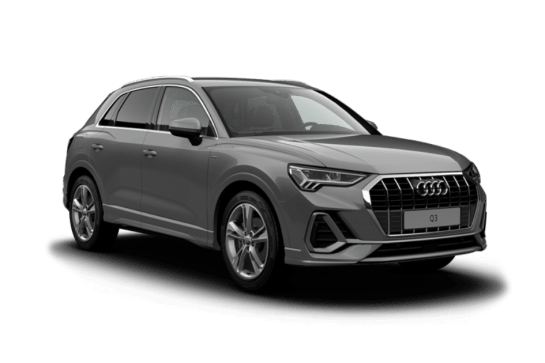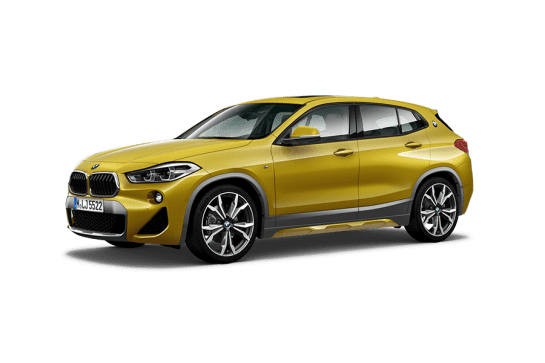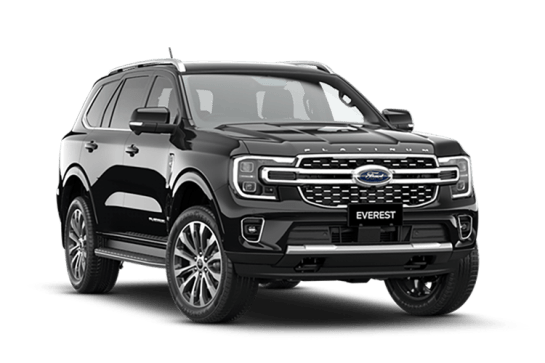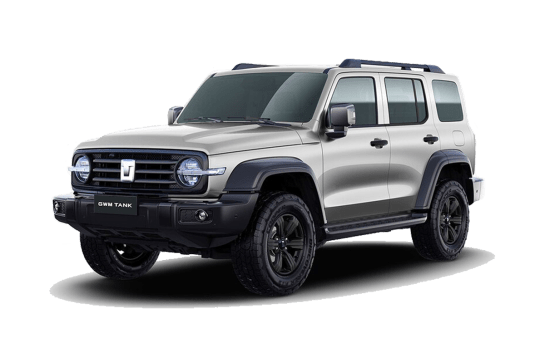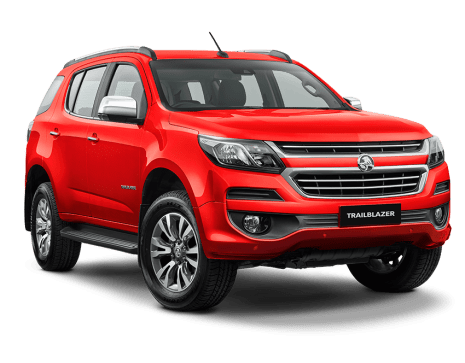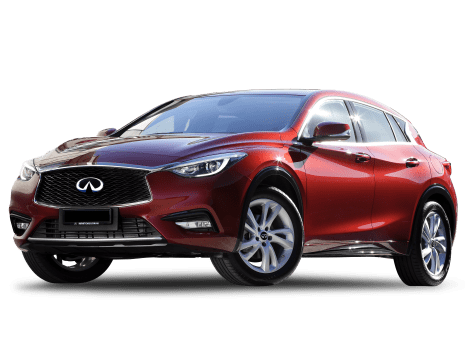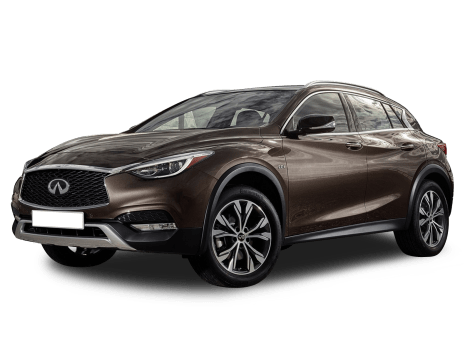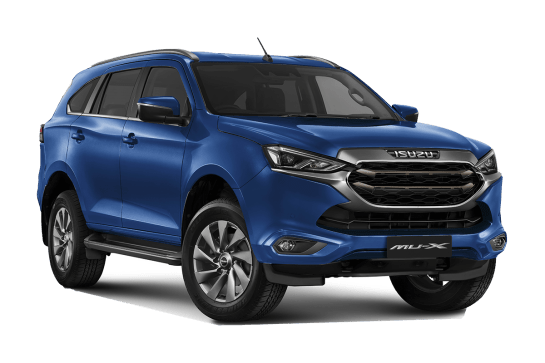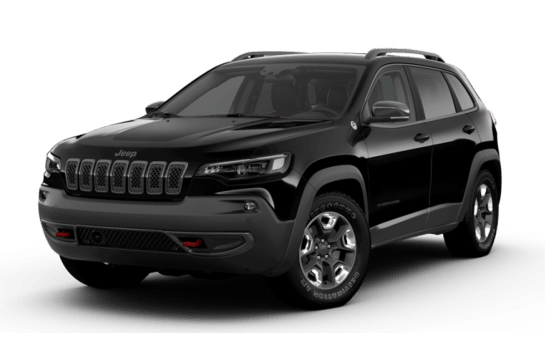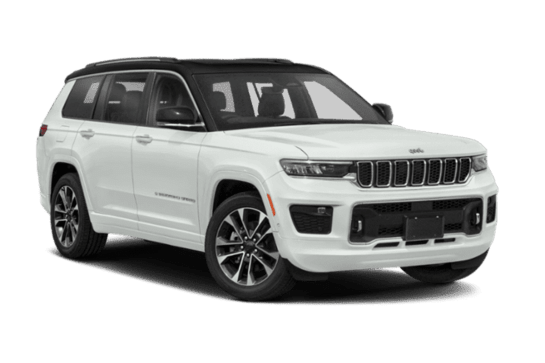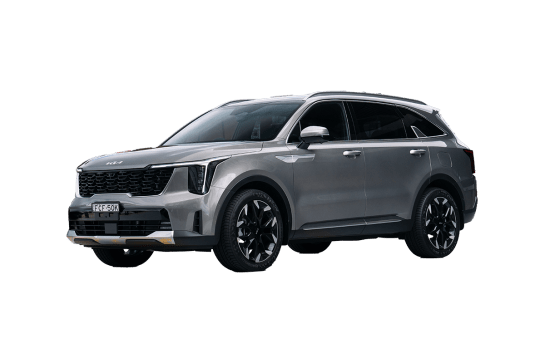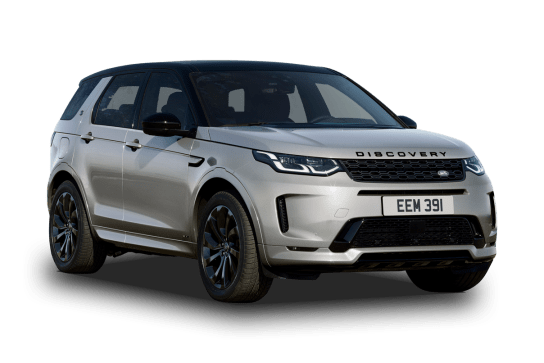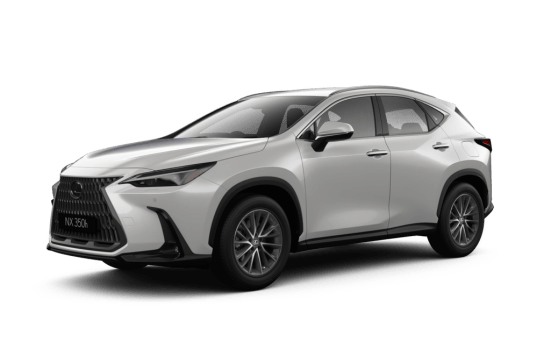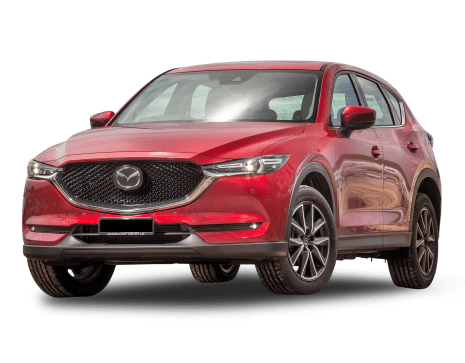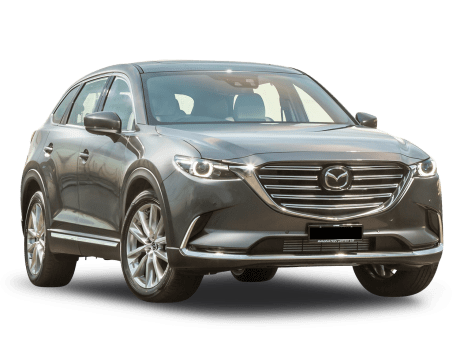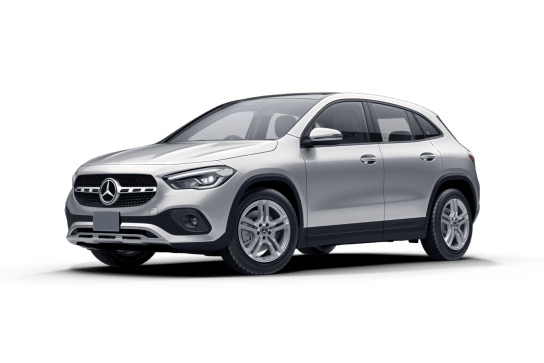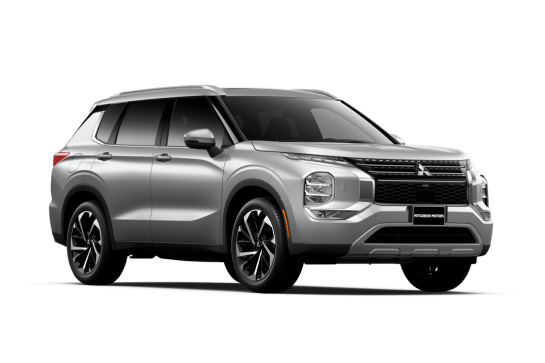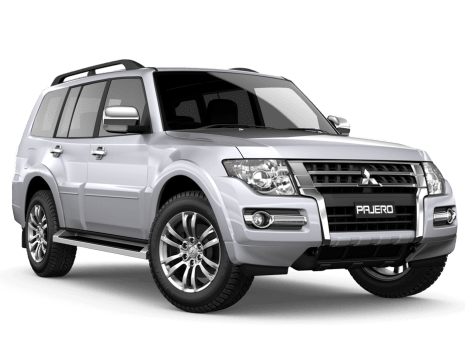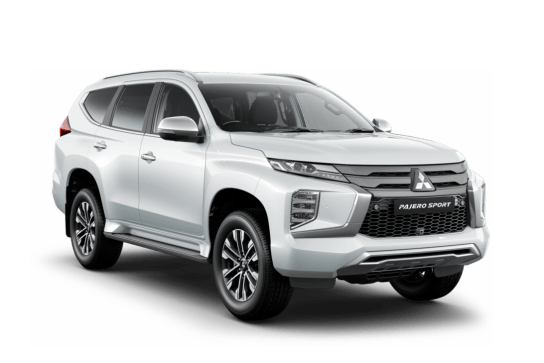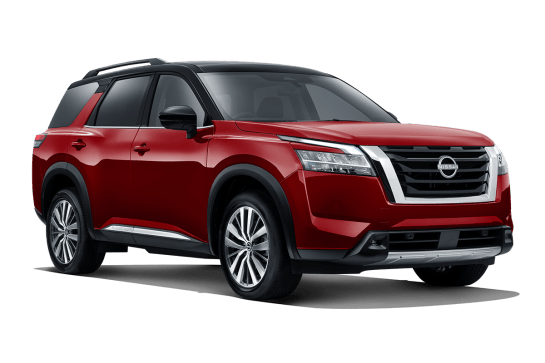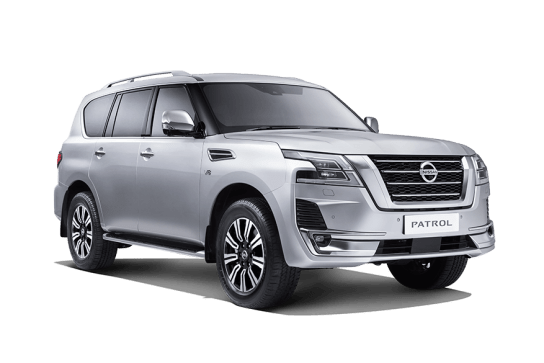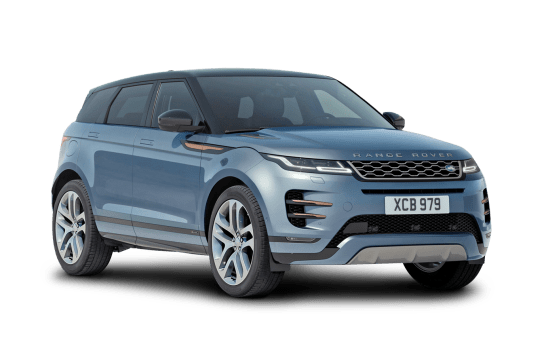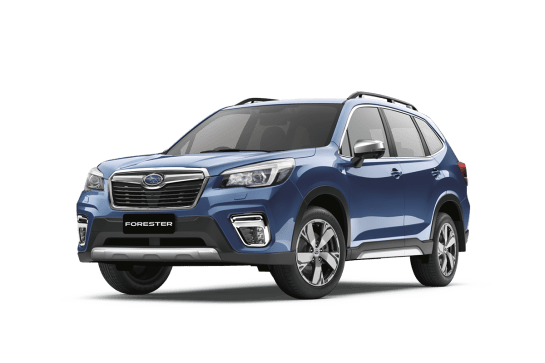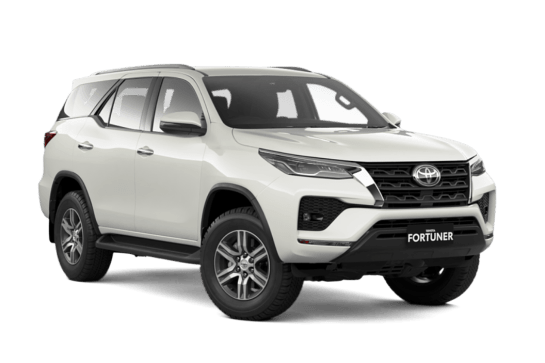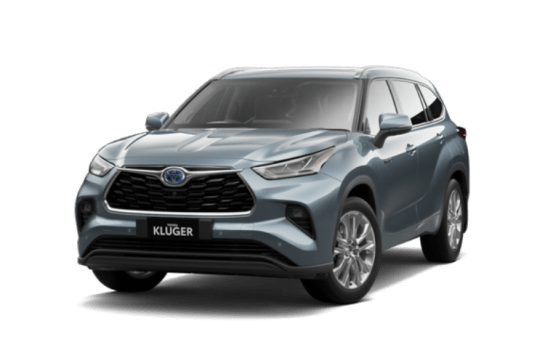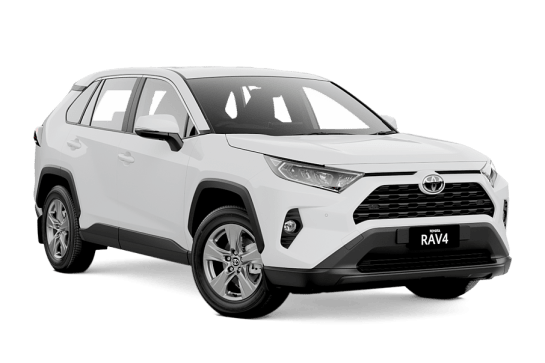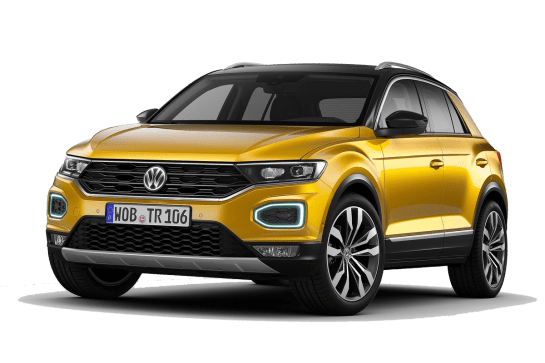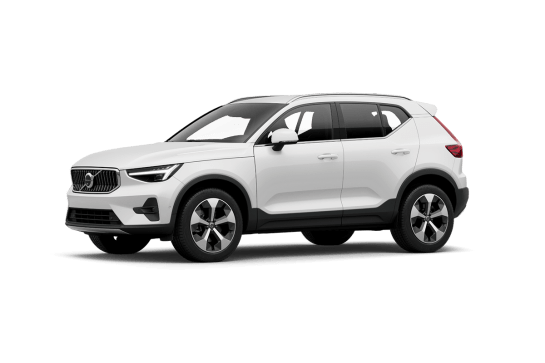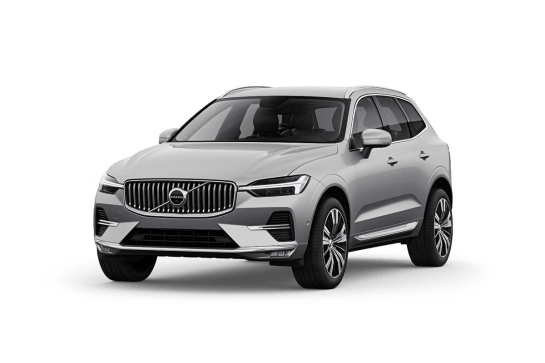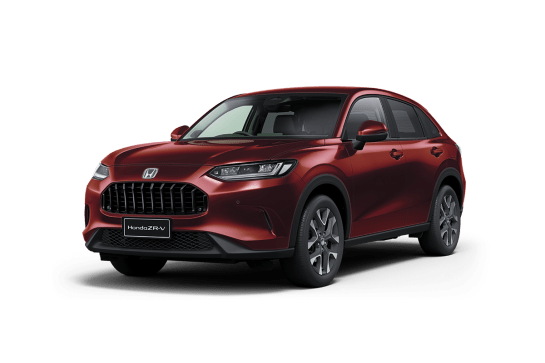
Honda ZR-V VS Jeep Wrangler
Honda ZR-V
Likes
Dislikes
Jeep Wrangler
Likes
- Fun to drive
- Very capable off-road
- New engine well suited to Rubicon
Dislikes
- Cramped interior
- Noisy when pressured
- Driving it can be tiring
Summary
Honda ZR-V
The Toyota RAV4 has plenty to answer for.
Firstly, it kicked off the whole mid-sized SUV craze 30 years ago, decimating hatch, sedan, wagon and coupe sales en masse, to change the way people thought about family cars.
Then, in 2019, the company launched the first mainstream hybrid SUV in Australia, opening up the electrification floodgates. Now everybody wants one.
Read more about
Think about that for one moment. Before the RAV4 hybrid, there were none bar expensive Lexuses like the NX and RX. Rav-dical!
Now there are over 15 different choices, with the Nissan X-Trail and Honda ZR-V hybrids being two of the newest on the scene.
We pit these fresh electrified mid-sized SUVs against each other to find out which might be right for you.
| Safety rating | — |
|---|---|
| Engine Type | 2.0L |
| Fuel Type | — |
| Fuel Efficiency | 5L/100km |
| Seating | 5 seats |
Jeep Wrangler
The two-door Jeep Wrangler Rubicon exists for a very specific reason: to have a lot of fun off-roading on terrain few other standard 4WDs are able to tackle.
Along with vehicles such as Suzuki’s Jimny and Toyota’s LandCruiser 70 Series, the short-wheelbase Rubicon exists within a thin market niche within a niche. This is a purpose-built hard-core body-on-frame 4WD with very few, if any, concessions to comfort, safety or even common sense.
But there big news is that it’s been updated: less power, more torque with a 2.0-litre four-cylinder turbo-petrol engine replacing the beloved V6 petrol, a damage- and scratch-resistant Gorilla Glass windscreen, a 12.3-inch touchscreen multimedia system, Nappa leather seats and a forward-facing Trailcam.
So, is this new-engined shorty Rubicon in updated form your ticket to dirty fun?
Read on.
Read more about
- Massive $25,000 price cut for 4x4 ute! Jeep Gladiator prices slashed before facelifted version of alternative Ford Ranger, Toyota HiLux and Mitsubishi Triton rival arrives
- Jeep Cherokee replacement coming within a year: CEO leaves little doubt when hinting at incoming "mainstream" mid-size SUV to rival Toyota RAV4 and GWM Haval H6
- Major brand's cheap new EV locked in: 2027 Jeep Renegade electric car to undercut the MG4, BYD, Dolphin and GWM Ora
| Safety rating | |
|---|---|
| Engine Type | 2.0L |
| Fuel Type | — |
| Fuel Efficiency | 9.9L/100km |
| Seating | 4 seats |
Verdict
Honda ZR-V/10
You’re looking at are two of the very best medium-sized SUVs out there. Regardless of price and position. Honestly, either should bring many years of sterling service.
Which one is for you depends on what that service needs to be.
The X-Trail e-Power is the better family-car allrounder, hands down, because of offers way more metal for the money, making it roomier and more practical. It’s also quieter, for some of the time at least.
But the ZR-V is athletic, agile and involving in a way the Nissan could never be. It’s also better equipped at this price point. And despite being from half-a-segment below, it’s still competitively packaged and feels from a class above.
We should be comparing this charming Honda against the Audi Q5 Sportback and BMW X4, it’s that special.
Whichever you choose, Toyota really needs to pull something out of the box with the next-gen RAV4 to beat these two.
Nissan X-Trail Ti e-Power | 8.5/10 |
| Honda ZR-V e:HEV LX | 8.6/10 |
Jeep Wrangler/10
The Jeep Wrangler Rubicon is a hardcore purpose-built 4WD with very few concessions to comfort, safety and common sense.
And that’s a good thing, especially in an increasingly cosseted world.
The two-door short-wheelbase Rubicon is a near-perfect off-road machine: short low-range gearing, mud terrain tyres, front and rear diff locks, and swaybar-disconnect, all combine to make the Rubicon a ready-to-go 4WD weapon.
If you’re shaking your head in disappointment at the Rubicon’s unpredictable on-road manners, lack of refinement and three-star ANCAP safety rating, then you’re missing the point entirely: it’s truckloads of fun.
But the reasons it’s so much fun are also the reasons some people might not like to live with the short-wheelbase Rubicon day to day: it’s a dialled-in driving experience that’s equal parts engaging and exhausting.
It mightn’t make much sense – if any at all – as a daily driver, but if you’re after pure real-world 4WD capability and truckloads of fun then you can’t ignore the two-door version of the Rubicon.
Design
Honda ZR-V
Before we kick off on design, here are two annoying facts about the Honda.
First off, apparently ZR-V stands for Gen-Z Recreational Vehicle. Trying hard much, Honda?
Or maybe not trying hard enough. In Australia, the ZR-V colour range is pitiful, with just five choices against the Nissan’s dozen.
Please, at least import the 'Aqua Green' and 'Petrol Blue', as offered in Japan. Or better still, inject some actual rainbow variety.
Anyway, rant over.
In almost every important dimension, the Nissan is usefully larger – by an additional 11mm in length (4680mm versus 4568mm), +105mm in height (1725mm v 1620mm) and +50mm in wheelbase (2705mm v 2655mm), while the ZR-V concedes just 1.0mm of ground clearance to the X-Trail’s 187mm.
Oddly, although the latter looks wider (and has more interior space to stretch), they’re actually the same overall width at 1840mm.
Visually, the ZR-V is like an SUV compilation greatest hits mishmash, with a bit of Maserati Grecale meets Ford Escape up front, a profile that whispers Porsche Macan and maybe Mazda CX-5, and a lot of Lexus RX at the rear.
That the designers have managed to make all that meld so well is an achievement in itself.
Meanwhile, the X-Trail’s tastiest angle is the rear-three-quarter, which also reveals the chunky wide stance, nice glass-to-body ratio and clean surfacing.
Up front, though, it’s looking fussy and even a bit dated already. Nissan’s facelifted this look (it’s a three-year old one) in North America, where it’s sold as the Rogue. Check it out. No better really.
And we’re still years away from seeing that happen here, as our models are made in Japan. Like with the ZR-V.
Overall, though, both are fine-looking SUVs, though the Nissan’s styling seems more original.
| Nissan X-Trail Ti e-Power | 8/10 |
| Honda ZR-V e:HEV LX | 8/10 |
Jeep Wrangler
The two-door Rubicon is 4334mm long (with a 2459mm wheelbase), 1894mm wide and 1879mm high.
The classic look has, for better or worse, remained essentially the same as it has for decades – blocky, straight up and down with big wheel arches … distinctive – but some minor tweaks have been introduced into the design mix this time.
The brand’s seven-slot grille now has metallic-look trim around each slot and bigger mesh inserts, marginally softer lines about the exterior here and there, and the cabin has a more modern feel to it than previous examples did.
Speaking of the cabin, the Wrangler Rubicon has low-key stylish trim boosted by Nappa leather and red stitching and its distinctive roll-over cage and removable roof.
The Rubicon has a striking appearance – like it or loathe it – and while few other new standard 4WDs grab the attention of everyone, this Jeep does just that.
Practicality
Honda ZR-V
Advantage: X-Trail. Families seeking space in a larger-than-usual mid-sized SUV need look no further.
Before we go on, remember, our photos show the Ti but the base ST-L that matches the ZR-V LX’s price point features an 8.0-inch (rather than 12.3-inch) central screen, more-traditional analogue instrumentation cluster with a 7.0-inch TFT screen, non-leather seat trim and conventional, rather than camera, interior mirror.
Regardless, you’re also likely to notice how large and airy the X-Trail interior is, with easy access to all five seats thanks to very wide-opening doors, revealing an interior offering heaps of legroom, headroom and shoulder room.
Nissan – just like Honda – got its interior right, with most of the important stuff thoughtfully executed – superb build quality, broad yet comfy front seats, ample ventilation, an excellent driving position with good all-around vision and completely logical control and button layout/access.
There's also more storage than you would know what to do with. Big bottle holders in the doors is another boon.
Remember when the X-Trail’s dash used to have chilled/cupholders, a centrally-located analogue instrument binnacle and two storage cubbies on either side, all to give it a rugged and utilitarian 4x4 feel?
That’s all gone now, with our Ti being the most opulent in the series’ 23-year (and four iteration) history.
More high points? Attractive and yet hardy, the long, low instrument panel features premium finishes, backed up by a chunky little steering wheel, an informative and multi-configurable digital instrument cluster, bi-level centre console bisecting the front seats for a cosier feel, and a big central touchscreen that’s simple to figure out and operate.
Out back, the quite flat yet supportive rear seats are remarkable for being slide-able as well as reclinable, while – as with the Honda – occupants are treated to rear air outlets, USB-A and USB-C port access, a centre folding armrest with cupholders and even more bottle storage in the doors.
Plus – predictably – the deep side windows lend a lot of light and vision out, adding yet another dimension of family friendliness. The substantially larger CR-V would have been a better fit for this showdown.
That all said, it’s not as if Honda was sitting on its hands when creating the ZR-V’s interior.
Strangely enough, it’s not as tight inside as its smaller length and wheelbase measurements suggest – especially if you’re a human and not, say, a tumble dryer trying to be shoved in the back. More on that later.
Up front, the ZR-V is typical modern Honda, with a simple – say might even say sparse – dashboard layout that, with plenty of soft-feel surfaces and strip of honeycomb trim, manages to look classy as well as sensible.
The leather front seats are cushy and nicely bolstered, providing an absolutely superb and immersive driving position ahead of elegant and crystal-clear digitalised instrumentation.
Along with the thick-rimmed sports steering wheel with paddle shifters (for regen-braking effort), it feels inclusive in here, like you’re about to drive a low-slung sports sedan. Thin A-pillars provide better-than-usual forward vision, too.
However, over-the-shoulder vision is poor due to the slim side and back glasshouse, and the black trim does make it seem smaller inside than it actually is, while having no factory sunroof availability – even as an option – is an oversight. That would at least shower the cabin with more light.
On the other hand, a high-set digital speed readout renders the absent head-up display almost superfluous, the cupholders, smartphone charger pad and under-console shelf are thoughtfully placed, the climate control is beautifully intuitive to operate and the tactility of the toggle and switchgear controls are right up there with luxury car alternatives.
Likewise, the back-seat area is also inviting, with ample room for even taller adults, proving the ZR-V’s rear isn’t cramped, just cosy due to the well-padded seating and high window line.
And the backrest has a 40/20/40 split, meaning the centre bit can be folded down for additional longer-load-through accessibility from the back. Great for skis or broomsticks.
Note, though, that, unlike in the X-Trail, neither the base nor backrest slide or recline, respectively, it’s dark enough to be a gloomy Smiths album out back, the back doors can’t hold a bottle, there are no overhead grab handles, and what’s with that fiddly roof-mounted centre rear lap/sash seat belt location?
Further back, it’s a no-brainer... on paper.
The X-Trail trumps the ZR-V with 205 litres more cargo capacity at 575L versus 370L. But in reality, both offer a decently-sized opening to help make loading bulky things inside easy.
There are low flat floors with sufficient depth and width for plenty of gear and a few nooks and crannies for additional items.
Keep in mind that neither carry spare wheels. You get a can of goo and an air pump instead. Not good enough for many rural drivers.
And that X-Trail hybrid's boot space is 10L less than the five-seat petrol-only versions, but much bigger than the 465L offered up in the seven-seat variants (also petrol-only). And speaking of internal combustion processes…
| Nissan X-Trail Ti e-Power | 9/10 |
| Honda ZR-V e:HEV LX | 8/10 |
Jeep Wrangler
The Rubicon interior has always received well-deserved praise for its durability and suitability for adventure and the outdoors life.
But while it is designed to cop dirt, mud, sand and the general messiness of an action-packed life, the two-door four-seat Rubicon’s interior remains a snug – almost too snug – space. The bulkiness of the roll cage and pillars encroaches on headroom and elsewhere the short-wheelbase Rubicon’s limited physical dimensions impact shoulder, leg, knee and foot room but not to a diabolical degree, especially if you’re a Hobbit like me.
On the plus side though, everything that should feel solid does (like the grab handles), and all dials, knobs and switches are easy to quickly locate and operate while traversing all types of terrain.
Jeep has always applied to the Rubicon quietly clever ideas, such as tensioned net pockets on the doors and in the seat-backs, and deep small-storage spaces with textured, grippy bases.
Upfront there are USB ports – a USB-A and a USB-C upfront, and two USB-A and two USB-C ports in the second row ports – as well as a 230V outlet upfront and in the rear, directional air vents, and cup holders in the centre console.
In terms of packability, this short-wheelbase Rubicon comes up, well, short. There’s not a lot of room inside for people, as mentioned earlier, so throwing extra gear into this Jeep’s cabin is a big ask.
When all four seats are in use, rear cargo space – listed as 365L – is really limited to only copping a few bags for an overnight trip.
Access to the rear is via a side-hinged tailgate, which opens from left to right, and it has a full-sized spare mounted to it.
Price and features
Honda ZR-V
Now, hang on. Wouldn’t it make more sense to simply compare the X-Trail e-Power with the recently-released Honda CR-V e:HEV RS range-topper?
They are, after all, roughly the same size.
And the answer would be yes, except the new CR-V hybrid is $60,000 drive-away, while you can buy a base X-Trail ST-L e-Power from under $55K drive-away… which just happens to be exactly how much the ZR-V e:HEV LX costs.
Do please keep in mind that cheaper versions of both Hondas are in the pipeline for Australia.
So, what are these hybrid mid-sized SUVs like, then?
Released in mid-2023 and based on the excellent Civic hatch, the ZR-V is the new kid on the block. And – starting at $54,900 drive-away – what it lacks in size against the X-Trail is more than made-up for in features.
Now, at this price point, both feature plenty of safety, including Autonomous Emergency Braking (AEB), blind-spot alert, lane-keep assist systems and adaptive cruise control with full stop-go functionality.
Additionally, you’ll find heated front seats, dual-zone climate control, wired Apple CarPlay/Android Auto, privacy glass, 18-inch alloys and a full suite of driver-assist safety systems including emergency braking, adaptive cruise control and surround-view cameras.
But considering the X-Trail ST-L costs the same price as the ZR-V LX, it lacks the latter’s 12-speaker Bose audio upgrade, leather upholstery, heated steering wheel, powered front-passenger seat, heated rear seats, wireless Apple CarPlay, wireless charger, reverse-tilt exterior mirrors, interior air purifier and hands-free powered tailgate with walkaway closing.
For an electric tailgate, leather and smartphone charger, you’ll need to step up to X-Trail Ti e-Power (as tested) from $54,690, before on-road costs, or just under $60K when drive-away costs are factored in, giving the ZR-V LX hybrid a handy $5K start.
However, the Ti does bring its own little exclusive luxuries, like tri-zone climate control, adaptive matrix LED headlights, a panoramic sunroof, exterior-mirror camera view, and 19-inch alloys – though you’ll need to fork out for the range-topping X-Trail Ti-L from $57,160, before on-road costs, (or nearly $63K drive-away to more-fully match most of the ZR-V LX hybrid’s spec.)
Advantage Honda. But, like we said, the Nissan has great big size on its side. And it has two electric motors for all-wheel drive – something the ZR-V has no reply for.
| Nissan X-Trail Ti e-Power | 9/10 |
| Honda ZR-V e:HEV LX | 9/10 |
Jeep Wrangler
The two-door four-seat Jeep Wrangler is only available in top-spec Rubicon guise. It has a list price of $82,950, excluding on-road costs. This Jeep has no real direct competitor and while its price-tag seems high for a vehicle with such a limited focus, this is a specialised and well-equipped off-roader with a legion of fans who believe it's worth it.
Standard features now include, as per the update, a 12.3-inch touchscreen multimedia system, Nappa leather seats, a forward-facing Trailcam, Gorilla Glass windscreen, 17-inch alloy wheels, and more.
Exterior paint choices include Bright White (standard) or Black, Granite Crystal, Sarge, Firecracker Red, Hydro Blue, Silver Zynith, High Velocity, Earl, Anvil, Tuscadero – all options. Premium paint is $1490.
Under the bonnet
Honda ZR-V
One of the biggest differences between these and the Toyota RAV4 hybrid is that these two contestants offer a significantly fuller EV experience.
Why? The Nissan’s petrol engine never powers any of the driven wheels, but instead drives one or both electric motors to make it all-wheel drive (AWD).
The Honda, meanwhile, uses its petrol engine to sometimes drive an electric motor, but mostly powers the front wheels, making it front-wheel drive (or 2WD in SUV marketing-speak).
Still, from behind the wheel, they’re remarkably similar in how they feel and behave, even if they sound completely different on the road.
For starters, both are no slouches, despite relying on a continuously variable transmission (the infamous CVT strikes again!) to drive these hybrid SUVs.
The X-Trail’s 1497cc 1.5-litre turbo triple produces 106kW of power at 4400rpm and 250Nm of torque at 2400rpm on its own, but with help from a power generator, inverter and twin electric motors (making 150kW on the front axle and 100kW on the rear), and its combined power and torque outputs are 157kW and 525Nm, respectively.
The latter happens from zero revs, since the electric motor is always doing the driving.
The ZR-V’s 1993cc 2.0-litre naturally aspirated four, meanwhile, delivers 104kW at 6000rpm and 186Nm at 4500rpm, but combined with the single 135kW motor, makes a combined 135kW and 315Nm.
Now, this might seem like a free kick for the muscular X-Trail, but the power-to-weight ratio difference evens the score more than you might expect: the 1.9-tonne (1903kg) Nissan pumps out 82.6kW/tonne, compared to our 1.6-tonne (1586kg) Honda’s 85.1kW/tonne.
The result? The latter’s 300kg-plus advantage and lower, sleeker shape means that, against our stopwatch, there was very little in it between the two hybrids – 7.1 vs 7.6s in favour of the gutsier Nissan. But it was only about 0.2s for most of that, until the X-Trail’s extra torque finally overcame that extra mass.
That said, during our 70-100km/h overtaking manoeuvre, both needed 2.9s, again highlighting the Honda’s lightness, while braking hard from 100-0km/h the ZR-V stopped three metres shorter at 39.2m. Again, blame the Nissan’s weight.
Keeping all that performance in check in both SUVs, by the way, are MacPherson-style struts up front and a multi-link rear end.
| Nissan X-Trail Ti e-Power | 9/10 |
| Honda ZR-V e:HEV LX | 9/10 |
Jeep Wrangler
As mentioned earlier, the V6 Pentastar petrol engine has been dropped and replaced by a 2.0-litre four-cylinder turbo-petrol engine – producing 200kW (9kW less than the V6) at 3000-4500rpm and 400Nm (53Nm more than the V6) at 3000-4500rpm – and an eight-speed automatic transmission.
The new combination is a quietly effective teaming; smooth, lively, and punchy, with plenty of torque on tap.
Befitting its rock-crawling status, the Rubicon has a full complement of off-roading mechanicals and driver-assist tech, including on-demand four-wheel drive (with high- and low-range gearing), live axles front and rear, as well as front and rear locking differentials, and a swaybar disconnect.
Efficiency
Honda ZR-V
Here’s another key difference. Officially, the Honda averages 5.0 litres per 100km while the Nissan should average 6.1L. But in reality…
During our week with both hybrid SUVs that included a lot of inner-urban schlepping as well as spirited driving and repeated performance testing – which tends to sap the fuel – the ZR-V averaged 7.3L/100km versus 8.6 for the X-Trail.
Note that the latter requires the more-expensive 95 RON premium-unleaded brew, too.
For the record, the car’s computer read 6.1 in the Honda and 7.4 in the Nissan, while the official combined average carbon dioxide emissions figures are 114 and 139g/km respectively.
The latter’s 55L tank means it should theoretically achieve around 900km between refills, against its rival’s 1140km from a 57L tank.
And just in case you’re wondering, the X-Trail’s lithium-ion battery is pretty modest at 2.1kWh, but that’s exactly twice as large as the ZR-V’s. Neither require to be plugged in, since - as mentioned earlier - the petrol engines do the charging.
| Nissan X-Trail Ti e-Power | 8/10 |
| Honda ZR-V e:HEV LX | 9/10 |
Jeep Wrangler
The Wrangler Rubicon has listed fuel consumption of 9.9L/100km on a combined cycle.
On this test I recorded 10.8L/100km between fills, but I did a chunk of low-range 4WDing and the new 2.0-litre four-cylinder turbo-petrol engine was never working hard.
The two-door Rubicon has a 66-litre fuel tank so, going by my on-test fuel figures, you could reasonably expect a driving range of about 610km from a full tank.
Driving
Honda ZR-V
If you were taking either of these mid-sized hybrid SUVs on a short test-drive around urban streets, you might be forgiven for thinking the way they go and feel is almost indistinguishable.
Light, ultra-smooth and responsive all the way.
At lower speeds, both are easy to park, with sufficiently tight turning circles and aided by the surround-view cameras that shouldn’t be an issue for anybody to accurately place. Plus, there’s a decent degree of ride comfort to enjoy as well.
Understandably, for most folk behind the wheel, they’d struggle to them apart, truthfully.
Thankfully, we pride ourselves for going beyond the test drive, and after hundreds of kilometres testing both vigorously, interchanging between the two regularly, their distinct personalities and traits become crystal clear.
Nissan first.
The X-Trail e-Power e-4orce is a formidable machine. It’s also truly an EV in the way it delivers its electric power from the motor only to the wheels. When that small battery is all juiced up, you’d never know this was anything else but.
Off-the-line acceleration is instantaneous, and grin-inducingly strong if you’re not expecting the immediate surge forward that follows, accompanied by that electric whirr as the Nissan punches through the air.
That big motor generates a formidable amount of torque that’s always on tap for effortless momentum and oomph as required. It feels like a much-more expensive machine, and is just as refined to boot.
So, it comes as a surprise at first when that 1.5-litre turbo triple does chime in, breaking the relative mechanical silence with a constant drone. Briefly if not so quietly working in the background at first, it keeps the battery charged up from a certain point, and then just as quickly extinguishes, a bit like the refrigerator in your kitchen does.
And, so, the cycle continues of EV whoosh then white good hum. When you need more muscle – say, when overtaking – the engine kicks in again, but this time at a higher-set rev as it charges the battery with more urge, because it never drives the wheels, remember.
You don’t really feel the 2.0-tonne weight of the Ti e-Power in normal turning or cornering situations, because the steering is eager yet beautifully weighted, making this a sharp handler.
Likewise, with two electric motors shuffling torque to whichever axle needs it, there’s an exceptional level of road holding control, even across the often waterlogged roads that the late-spring weather showered upon. The Nissan is a perfectly safe and controllable long-distance grand tourer.
Muted tyre and road noise (wearing Dunlop Grand Trek 235/55R19 rubber), an effective ‘e-Pedal’ regenerative braking system that helps recharge the battery whilst bringing the car to a near stop, as well as nuanced traction and stability control intervention, are further bonuses that add to the enjoyment of riding and travelling in the Nissan.
However, while the around-town suspension comfort is impressive, larger bumps make themselves felt, as if the X-Trail’s springs have reached the limit of their absorption. Is that all that extra weight talking?
More annoyingly, when cruising along at speed in crosswinds, the steering can become a bit too sensitive, as the driver needs to make constant corrections to remain on the straight and narrow.
As a result, the car feels a little unsettled and nervous due to the slight but noticeable left-right pitching that ensues. One passenger described it as fidgety.
And, like many hybrid vehicles, including most of Toyota’s, the very effective brakes suffer from a wooden and artificial feel, meaning they can be a bit hard to moderate smoothly when applying.
Otherwise, the X-Trail is a pleasant and accomplished vehicle dynamically, and so a good all-around drive.
The ZR-V, however, is in another league.
The driver’s notes tell the story succinctly: “Lovely, smooth, linear and involving steering.” The Honda glides through corners with precision and ease, even at much higher speeds than most would attempt, backed up by plenty of grip and control.
And while there isn’t the AWD surety when conditions are wet, it still always felt planted and secure over our largely-wet test route.
Such dynamic athleticism suggests that ride comfort would be compromised, but on the smaller Bridgestone Alenza Enliten 225/55R18 tyres, the initial suspension firmness is tempered by an underlying suppleness and comfort that highlights a high degree of sophisticated suspension tuning.
The Honda truly is the driver’s hybrid SUV. More so than any other anywhere near its price point that springs to mind.
Because it’s largely a petrol-driven hybrid, rather than an EV with petrol-engine assistance like the Nissan, the ZR-V does not quite have that effortless all-electric torque to rely on, instead feeling more conventional in the way it delivers drive to the front wheels.
The 2.0L four's engagement after a brief all-EV driving period is seamless, by the way, and also typically-Honda in the way that it revs freely, sounding urgent as it delivers its torque consistently, even at low speeds.
Put your foot down more, and the electric assistance comes into play again, providing a decent whack of speed – more so than you might initially expect. And all of this is provided with a refinement and civility you’d expect in a much more premium machine.
Other plus points include yet another subtle traction/ESC tune over gravel tracks, but one with a degree of looseness for a bit of fun if the driver is up for it, paddles that provide some EV regen-braking e-Pedal-style to slow you down, and a nifty drive-mode toggle that can be easily prodded by the driver without distraction. A sign of the enthusiasts who engineered this sporty SUV.
The only fly in the Honda’s driving ointment is noise. Too much road roar over coarse chip surfaces, and excessive wind rush from the large exterior mirrors.
Otherwise, the ZR-V is exceptionally accomplished dynamically for any modern family vehicle, and not just a medium-sized hybrid SUV. Not perfect, but massively impressive and delightful.
| Nissan X-Trail Ti e-Power | 8/10 |
| Honda ZR-V e:HEV LX | 9/10 |
Jeep Wrangler
The two-door Rubicon is rather ordinary to drive on sealed surfaces, but it isn’t anywhere near as diabolical as some people would have you believe.
This is a purpose-built off-roader with a wide wheel track and low centre of gravity, so it feels solid on bitumen and dirt in equal measure.
However, you do have to drive it with full focus and give yourself time to get used to some if its more quirky aspects if you aren’t already familiar with them. There is plenty of play in the steering, lots of on-road floatiness and body roll, and this Rubicon – tipping the scales at 1977kg tare weight (listed) and measuring 4334mm long (with a 2459mm wheelbase), 1894mm wide and 1879mm high – can be an unpredictable unit.
You need to micro-manage this shorty 4WD at all times. It’s like driving a go-kart, but more fun and – bonus – it’s street legal.
If you’re steering it, this short-wheelbase Rubicon demands your constant attention – but that’s a fun characteristic I appreciate and that it shares with only a few other vehicles such as the Suzuki Jimny and Toyota LandCruiser 70 Series.
However, as fun as it is, this kind of fully engaged driving experience – requiring laser-focus concentration to keep a vehicle on target – asks a lot of the driver and does become tiring (nay, exhausting) after long stints on the road or off of it.
Beyond that though, this Rubicon, with a track-tight turning circle of 10m, is a nicely manoeuvrable vehicle around town (for swift turnarounds and easy parking) in the suburbs and even along overgrown bush tracks – but more about that soon.
Wrangler fans who have bemoaned the loss of the Pentastar V6 needn’t have worried. The new four-cylinder engine delivers a gutsy punch of acceleration when needed and is nicely matched to the eight-speed auto. It’s also smoother, more refined and less noisy than before.
The solid-axle Rubicon has a suspension set-up – including coil springs at every corner – that soaks up most bumps in the road, and that makes for impressive levels of driver and passenger comfort.
This little purpose-built rock-crawler is solidly built and it can get noisy when you’re inside of it as it rumbles along a road or track – no surprise because it does have a boxy body, big wing mirrors and chunky mud-terrain tyres. Part of the experience, part of the fun, I reckon.
So, how does it go off-road? Bloody well, as usual.
The Rubicon is a genuine 4WD with a dual-range transfer case, a ladder chassis, solid axles, well-established 4WD heritage and its boosted by driver-assist tech. It’s immediately more at home taking on low-speed 4WDing than it is negotiating suburban traffic, shopping centre car parks or city streets.
I’ve driven Rubicons in pretty much every kind of challenging off-road situation – sand, steep rain-slick rocky hills, deep mud holes, swollen water crossings – and they’ve never disappointed.
These Jeeps are some of the few modern-day 4WDs engineered with an off-road focus that offers few concessions to anything other than dirt-track fun – the only vehicles in the same realm are the aforementioned Jimny, 70 Series, and even the likes of the Ford Ranger Raptor and Ineos Grenadier.
Steering in the chopped Rubicon retains a nice weight and feel to it during 4WDing, staying precise as needed, offering the driver a great sense of sustained control through even severe terrain.
Its planted stance gives the Rubicon a distinct composure and its suspension – with a coil spring at each corner – helped it to take the sting out of every dirt-road corrugation on the way to my unofficial 4WD testing and proving ground.
As mentioned earlier, anyone worried about the V6 being dropped should calm down. The new engine is a lively and punchy unit – even livelier than the V6 – and offers up ample smoothly-delivered torque across a wide spread of revs, ideal for high- and low-range 4WDing.
When you switch to 4L and drop the revs, it’s easy to squeeze the most out of this new engine. Considered driving is necessary as is slow and steady throttle, but that's easily achieved in this Rubicon and it was never overworked even when the terrain became very challenging.
This Jeep has a well-calibrated off-road traction control system but if you need even more terrain-grabbing magic, it has front and rear diff locks, and a front sway-bar disconnect system, which helps to unlock even more articulation, and let those tyres stretch to the ground for all-important traction.
The Rubicon also has Selec-Speed Control (an adjustable low-speed cruise control for 4WDing that can be set between 1.0-8.0km/h), and Off-Road+, which adjusts throttle and traction control, among other systems, to best suit the terrain.
What’s also handy about the Rubicon is that, via the off-road pages on the multimedia screen, you can monitor your 4x4 system, as well as vehicle steering angle, pitch and roll, and the status of the diff locks and the swaybar disconnect system.
The two-door Rubicon has a listed 257mm of ground clearance and 760mm wading depth. While I didn’t experience any water crossings that deep this time, I did do plenty of driving on coastal sand, just inland from a beach, and there were deep rutted sections, so I saw clear evidence of its running clearance.
When it comes to approach, departure and ramp-over angles, the higher the number the better and the short-wheelbase Rubicon checks out with listed measurements of 44, 37, 27.8 degrees respectively, and this small 4WD climbs up and over even steep rocky hills with sharp crests, without ever being in danger of scraping the earth with its front, under-carriage or its back end.
The Rubicon rides on BFGoodrich Mud-Terrain KM2 (255/75R17) tyres – real muddies – and those are strapped to 17-inch alloys. These are good tyres and the 17-inch set-up is good for off-roading.
The shorty Rubicon is not a big vehicle and so its Gross Vehicle Mass (GVM, 2404kg) and Gross Combined Mass (GCM, 3751kg) are not massive figures.
It’s not renowned as a towing platform of note but it pays to know that its tongue download is 150kg, towing capacity is 750kg (unbraked) and 1497kg (braked).
Safety
Honda ZR-V
Only the X-Trail has an ANCAP crash test rating, and it’s achieved five stars, based on the smaller Qashqai “partner model”.
While ANCAP has yet to test the ZR-V, Euro NCAP recently awarded the Honda four out of five stars, citing it was “just below the five-star performance thresholds” due to slightly below-par adult side-impact protection where the front occupants’ heads can make contact, as well as safety-assist system anomalies whereby traffic-sign recognition and driver monitoring tech that do not default to ‘on’ or only operate above 45km/h, respectively.
Both models offer lots of driver-assist safety equipment, like Autonomous Emergency Braking (AEB) with pedestrian and cyclist detection, blind-spot alert, lane-keep assist systems, adaptive cruise control with full stop-go function, a driver fatigue monitor, auto high beams, traffic sign recognition, front/rear parking sensors, anti-lock braking system with brake assist, 'Electronic Brake-force Distribution', hill-start assist, stability control and traction control.
However, there are omissions: the Honda misses out on the Nissan’s rear AEB with pedestrian and cyclist calibration, while the Nissan’s seven airbag rating trails the Honda’s 11 – which includes full side airbag protection for outboard rear-seat occupants.
Both vehicles also include ISOFIX child-seat latches fitted to outboard rear seat positions, while a trio of top tethers for straps are included across the rear bench.
Note that Honda’s AEB system is operational from 5.0-180km/h according to Euro NCAP, the lane support systems work between 65-180km/h and the traffic-jam assist tech works between 0-72km/h.
The Nissan’s AEB kicks in from 5.0-130km/h, pedestrian and cyclist AEB from 5.0-80km/h, and the lane support systems work between 60-250km/h.
| Nissan X-Trail Ti e-Power | 9/10 |
| Honda ZR-V e:HEV LX | 8/10 |
Jeep Wrangler
The Jeep Wrangler range has a three-star ANCAP safety rating from testing in 2019.
The rating is not up to scratch in this day and age, but the Rubicon does have onboard a full suite of safety gear including six airbags (two dual-front, two side, two side curtain), as well as auto emergency braking (city and inter-urban) blind spot warning, adaptive cruise control and front and rear parking sensors.
Ownership
Honda ZR-V
Both Nissan and Honda offer a five-year/unlimited kilometre warranty that also includes roadside assistance.
But the ZR-V goes one better with a no-cost subscription to Honda Connect for remote vehicle operation, location and geo-fencing if required. Clever.
The Honda’s servicing intervals are every 12 months or 10,000km, with capped price servicing pegged at an annual flat fee of $199 for the first five years. That’s under $1000 over that period of time.
Nissan, meanwhile, matches all that, bar the 'Honda Connect' tech, and offers six years of capped-price servicing.
But at the five-year mark, the X-Trail e-Power costs over $1300 more than the ZR-V hybrid.
| Nissan X-Trail Ti e-Power | 8/10 |
| Honda ZR-V e:HEV LX | 9/10 |
Jeep Wrangler
The Wrangler is covered by Jeep's five-year/100,000km warranty – that’s sub-standard compared to the baseline five year/unlimited km warranty.
Service intervals are recommended every 12 months and 12,000km with capped-price servicing set at $399 a pop.
If you have your Rubicon serviced at a Jeep outlet then lifetime roadside assistance is on the cards.


